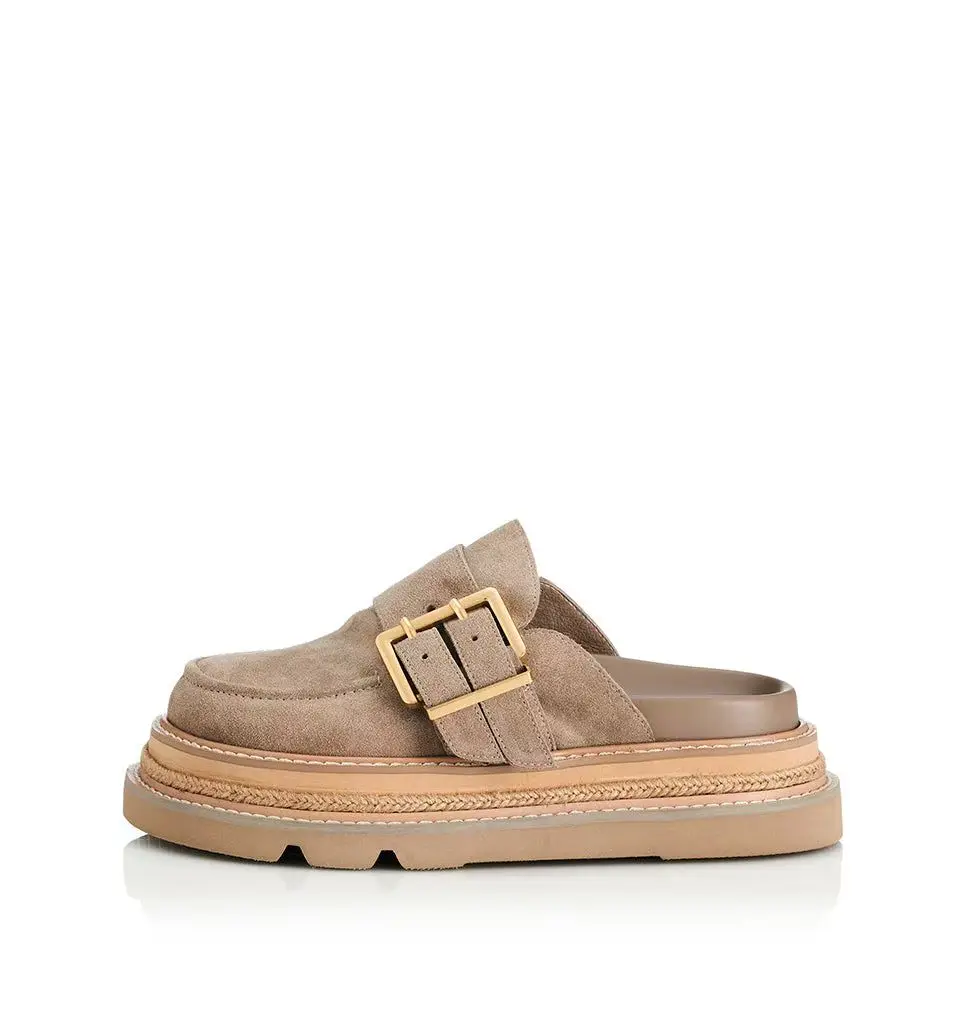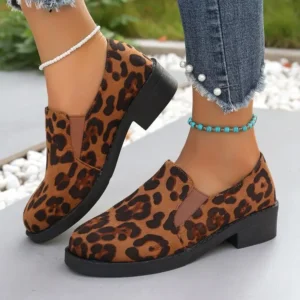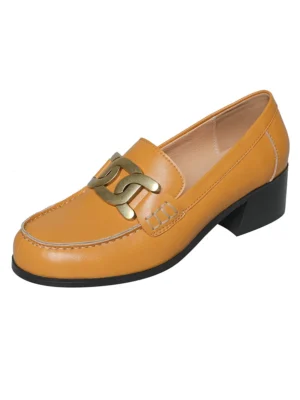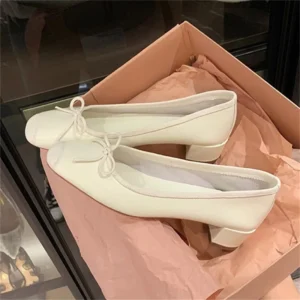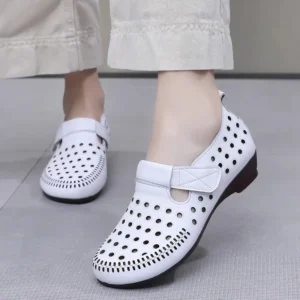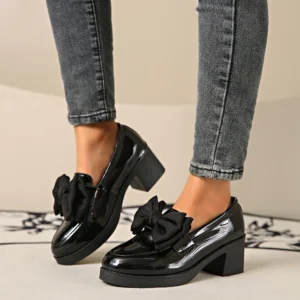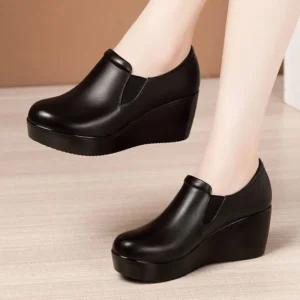Understanding the Physical Impact of Prolonged Standing
Standing for extended periods takes a significant toll on your body, especially your feet and lower back. Many professionals spend 8+ hours daily on their feet, creating a cascade of potential health issues when wearing improper footwear.
The physical challenges of prolonged standing include:
- Plantar fasciitis: Inflammation of the thick band of tissue connecting your heel to your toes
- Metatarsalgia: Pain and inflammation in the ball of your foot
- Edema: Swelling caused by fluid retention, particularly around ankles and feet
- Lower back pain: Caused by poor posture and inadequate foot support
According to the American Podiatric Medical Association, nearly 75% of Americans experience foot problems during their lifetime, with workplace standing being a primary contributor. When wearing shoes that lack proper support, pressure concentrates on specific points of your feet, creating pain that radiates throughout your body.
The right footwear isn’t just about comfort—it’s preventative healthcare. Wedge heel loafers represent an ideal solution for those seeking to balance professional appearance with ergonomic support. These versatile shoes distribute weight evenly while providing the elevation and style of a heel, making them perfect for professional office loafer outfits that don’t compromise on comfort.
The Biomechanical Advantages of Wedge Heel Design
Wedge heels differ fundamentally from traditional heels in their construction and the biomechanical benefits they provide. While standard heels create a distinct separation between the heel and forefoot—leaving a gap under the arch—wedge designs feature a continuous supportive surface from heel to toe.
This uninterrupted sole design creates several significant advantages:
The continuous surface of a wedge distributes body weight more evenly across the entire foot, rather than concentrating pressure on the heel and ball as traditional heels do. Pressure mapping studies show that wedges create up to 30% less pressure on the forefoot compared to similar height traditional heels.
The solid base of wedge designs significantly improves lateral stability. Without the narrow contact point of a standard heel, wedges reduce ankle wobble and provide a more secure foundation. This stability benefit is particularly valuable during a long workday when fatigue might otherwise compromise balance.
Wedge designs also promote better spinal alignment. The graduated incline allows for a more natural posture compared to the abrupt angle created by standard heels. This improved alignment reduces strain on the lower back—a common complaint among those who stand for extended periods.
Many wedge loafers also incorporate platform fronts, which reduce the effective heel height (the actual incline of the foot). A 2.5-inch wedge with a 0.5-inch platform creates only a 2-inch effective heel height, providing elevation with less strain.
Understanding why choose wedge heel loafers becomes clear when examining these biomechanical benefits, making them an excellent choice for professionals seeking comfort without sacrificing style.
Essential Comfort Features for Standing-Friendly Wedge Loafers
When selecting wedge loafers for all-day standing, certain comfort features are non-negotiable. These elements work together to create footwear that supports your feet through extended periods of use.
Premium Cushioning Systems
The foundation of comfortable standing shoes is superior cushioning. Look for memory foam insoles that conform to your foot shape, distributing pressure evenly. Gel inserts provide targeted cushioning at high-impact points, while EVA (Ethylene Vinyl Acetate) midsoles offer lightweight shock absorption that doesn’t compress over time.
Anatomical Arch Support
Different foot types require varying levels of arch support. Quality wedge loafers feature contoured footbeds that support the natural arch of your foot, preventing overpronation and reducing fatigue. Some designs include reinforced arch zones specifically engineered to maintain foot alignment during long periods of standing.
Breathable Materials
Moisture management is crucial for all-day comfort. Breathable materials allow air circulation, preventing the uncomfortable heat buildup and moisture accumulation that lead to blisters. Natural materials like leather and textiles with moisture-wicking properties help maintain optimal foot temperature and dryness.
Shock Absorption
Hard surfaces like concrete and tile magnify impact forces. Effective shock-absorbing elements in the sole absorb and disperse this energy rather than allowing it to travel up through your feet, ankles, and knees. Look for designs with dedicated shock-absorbing zones in the heel and forefoot.
Flexible Forefoot Design
While stability is important, your foot needs to flex naturally during walking. The forefoot area of quality wedge loafers includes flexibility zones that allow your foot to bend normally at the ball, reducing muscle fatigue and promoting natural movement patterns.
Heel Cup Stabilization
A deep, contoured heel cup cradles your heel, preventing lateral movement and keeping your foot properly positioned. This stabilization reduces friction and helps maintain proper alignment throughout your standing shifts.
Wide Toe Box
Cramped toes lead to discomfort, numbness, and potential long-term issues like bunions. Standing-friendly wedge loafers feature wider toe boxes that allow natural toe splay, reducing pressure points while maintaining a professional appearance.
Exploring our collection of women’s wedge heel loafers reveals how these comfort features can be seamlessly incorporated into stylish professional footwear designed for standing comfort.
Material Matters: Selecting Long-Lasting, Comfort-Focused Upper Materials
The materials used in wedge loafers significantly impact both comfort and durability—particularly important for shoes intended for daily wear during long standing periods.
Premium Leather
Full-grain and top-grain leather provide unmatched benefits for standing comfort. These materials gradually conform to your foot shape, creating a custom-fit feeling that improves with wear. Leather’s natural breathability allows moisture to escape, keeping feet dry throughout the day. While requiring a longer break-in period, quality leather develops a comfort level that synthetic materials rarely match and typically lasts years longer with proper care.
Suede
Softer and more immediately flexible than smooth leather, suede offers excellent comfort from the first wear with minimal break-in time. Its textural quality provides visual interest while maintaining a professional appearance. However, suede requires more maintenance to protect against moisture and staining, making it less practical for unpredictable work environments.
Advanced Synthetics
Modern synthetic materials have improved dramatically, offering lightweight alternatives with excellent durability. Many incorporate moisture-wicking and antimicrobial properties particularly valuable in healthcare settings. Quality synthetics can provide immediate comfort without breaking in, though they may not mold to your foot over time like natural materials.
Interior Lining
The interior material directly contacts your foot and plays a crucial role in comfort. Soft leather linings prevent friction while allowing breathability. Moisture-wicking textile linings actively move perspiration away from your skin, reducing blister risk. Seamless construction eliminates potential irritation points—a seemingly small detail that becomes extremely important during eight-hour shifts.
For those prioritizing durability and classic appeal, our women’s leather heeled loafers showcase how premium materials can enhance both the comfort and longevity of wedge designs.
Sole Construction: The Foundation of All-Day Support
The sole construction forms the literal foundation of your standing comfort, with each component playing a crucial role in supporting your feet throughout long days.
Outsole Material Comparison
– Rubber outsoles provide superior traction and shock absorption, making them ideal for varied work environments. Natural rubber offers excellent grip on both dry and wet surfaces.
– Synthetic outsoles typically weigh less than rubber while providing good durability and flexibility. Many incorporate specialized compounds for enhanced slip resistance.
– Leather outsoles offer elegance and breathability but provide less shock absorption and traction than rubber options, making them better suited for office environments than retail or healthcare settings.
Traction Patterns
The outsole pattern significantly impacts stability. Look for multidirectional tread designs that prevent slipping without creating traction that’s too aggressive for smooth flooring. The best patterns provide confident footing without collecting debris that could damage floors.
Flexibility Zones
Strategic flexibility points allow natural foot movement while maintaining structural integrity. Quality wedge loafers incorporate flex grooves aligned with the foot’s natural bending points, reducing the energy required for walking while preventing premature sole cracking.
Midsole Support
Between the outsole and footbed, the midsole provides crucial cushioning and stability. Varying densities within the midsole can provide targeted support where needed most, while maintaining overall flexibility. This layered approach creates comprehensive comfort that lasts throughout extended wear.
The relationship between sole construction and noise deserves special consideration in professional environments. Rubber composites with air pockets can create quieter footfalls—an important feature for healthcare, library, and other noise-sensitive workplace settings.
Understanding how to wear loafers in the office involves considering these construction elements alongside style to ensure both professional appearance and functional comfort.
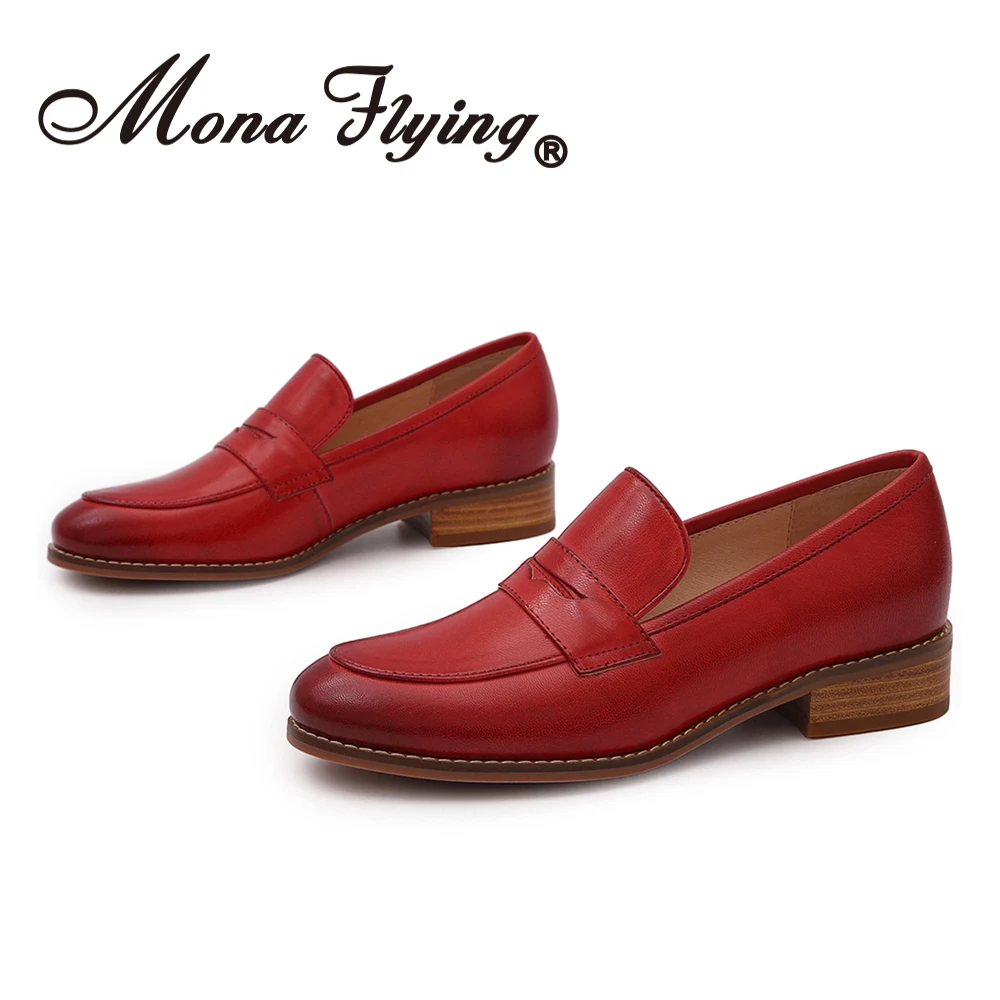
Finding Your Perfect Fit: Size, Width, and Adjustment Features
Even the most well-designed wedge loafer will cause discomfort if it doesn’t fit properly. Finding your perfect fit requires attention to several key factors beyond simple shoe size.
Accurate Foot Measurement
Measure your feet at the end of the day when they’re most swollen. Stand while measuring to allow natural foot spread. Remember that many people have slight size differences between their feet—always fit to the larger foot.
Width Considerations
Standard width loafers may not accommodate all foot shapes. Quality brands offer multiple width options (narrow, medium, wide, extra wide) to ensure proper fit across the ball of the foot without excess pressure or movement. A proper width prevents both uncomfortable squeezing and destabilizing looseness.
Accommodating Daily Swelling
Feet naturally expand during the day, especially for those standing constantly. Choose loafers with a slight cushion of space (approximately 3/8 inch) between your longest toe and the shoe’s end to accommodate this swelling without creating pressure points.
Adjustment Features
Look for wedge loafers with:
– Elastic goring that flexes with foot movement
– Adjustable straps or buckles to customize fit
– Padded collars that prevent heel slippage without causing friction
Signs of Proper Fit
– No pinching or pressure points when standing
– Heel remains securely in place when walking
– Width accommodates foot without side-to-side movement
– Arch support aligns with your foot’s natural arch
– Toes can wiggle freely without hitting the front
Trying-On Tips
Always try shoes in the afternoon or evening when your feet are at their largest. Wear the type of socks or hosiery you’ll typically use with these shoes. Walk on various surfaces if possible, including inclines, to test stability and comfort in different conditions.
Wedge Height Considerations for Maximum Comfort
Finding the ideal wedge height balances professional appearance with practical comfort for all-day standing. This sweet spot varies somewhat between individuals, but research and podiatry recommendations provide helpful guidelines.
For maximum all-day standing comfort, most podiatrists recommend wedge heights between 1.5 and 2.5 inches. This range provides enough elevation for professional appearance while minimizing foot strain. Heights above 3 inches significantly increase forefoot pressure, even with wedge distribution.
Platform fronts create an optical illusion that works in your favor. A wedge with a 2-inch heel height and 0.5-inch platform front creates only a 1.5-inch incline for your foot. This reduced angle maintains the elevated appearance while dramatically improving comfort for extended wear.
The incline angle—not just height—determines comfort. Two wedges of identical height can feel dramatically different depending on their slope gradient. A more gradual incline distributes weight more evenly across your foot, reducing forefoot pressure.
If you’re new to wearing heeled footwear, start with lower wedges (1-1.5 inches) and gradually increase height as your feet adapt. This progressive approach allows foot and leg muscles to adjust to the new positioning without creating immediate discomfort.
For professional environments, wedge heights between 1.5-2.5 inches typically strike the perfect balance between authority and comfort. This moderate elevation provides a polished appearance without compromising stability during long meetings or shifts.
Those requiring alternatives might explore our women’s block heel loafers which offer similar stability benefits with a different aesthetic profile.
Professional Style Guide: Versatile Wedge Loafer Designs for Various Settings
Wedge loafers bridge the gap between comfort and professional style, with numerous designs suitable for different workplace environments and dress codes.
Classic Penny Loafers with Wedge Heels
These timeless designs feature the distinctive strap across the vamp with a subtle wedge heel. Perfect for traditional office environments, they pair seamlessly with tailored trousers, pencil skirts, and structured dresses. In neutral tones like black, navy, or burgundy, these versatile staples integrate perfectly into conservative professional wardrobes.
Minimalist Modern Designs
Clean-lined wedge loafers without embellishment create a contemporary professional statement. These streamlined designs feature smooth leather uppers and architectural wedge profiles that complement modern workwear. Their simplicity allows them to transition easily between different professional settings, from client meetings to presentations.
Tasteful Embellishments
Strategic embellishments like subtle tassels, small metal hardware, or textured leather add visual interest without compromising professionalism. These details elevate basic outfits while remaining appropriate for business settings. The key is moderation—choosing pieces where comfort features remain the priority with style elements as thoughtful accents.
Material Selection for Versatility
Matte leather finishes provide the most professional versatility, working well across seasons and dress codes. For warmer months or less formal environments, perforated leather or suede options add visual texture while maintaining breathability. Quality synthetic materials with minimal shine offer practical alternatives for varying weather conditions.
Seasonal Transitions
Darker tones provide year-round versatility, while burgundy and deep green offer sophisticated color options beyond basic black. For summer, lighter neutrals like taupe or soft gray maintain professionalism while complementing seasonal wardrobes. The wedge construction allows these transitions without sacrificing the support needed for all-day comfort.
For inspiration on creating complete looks around your comfortable footwear, explore our guide to business casual loafer outfit ideas featuring versatile styling options for different workplace settings.
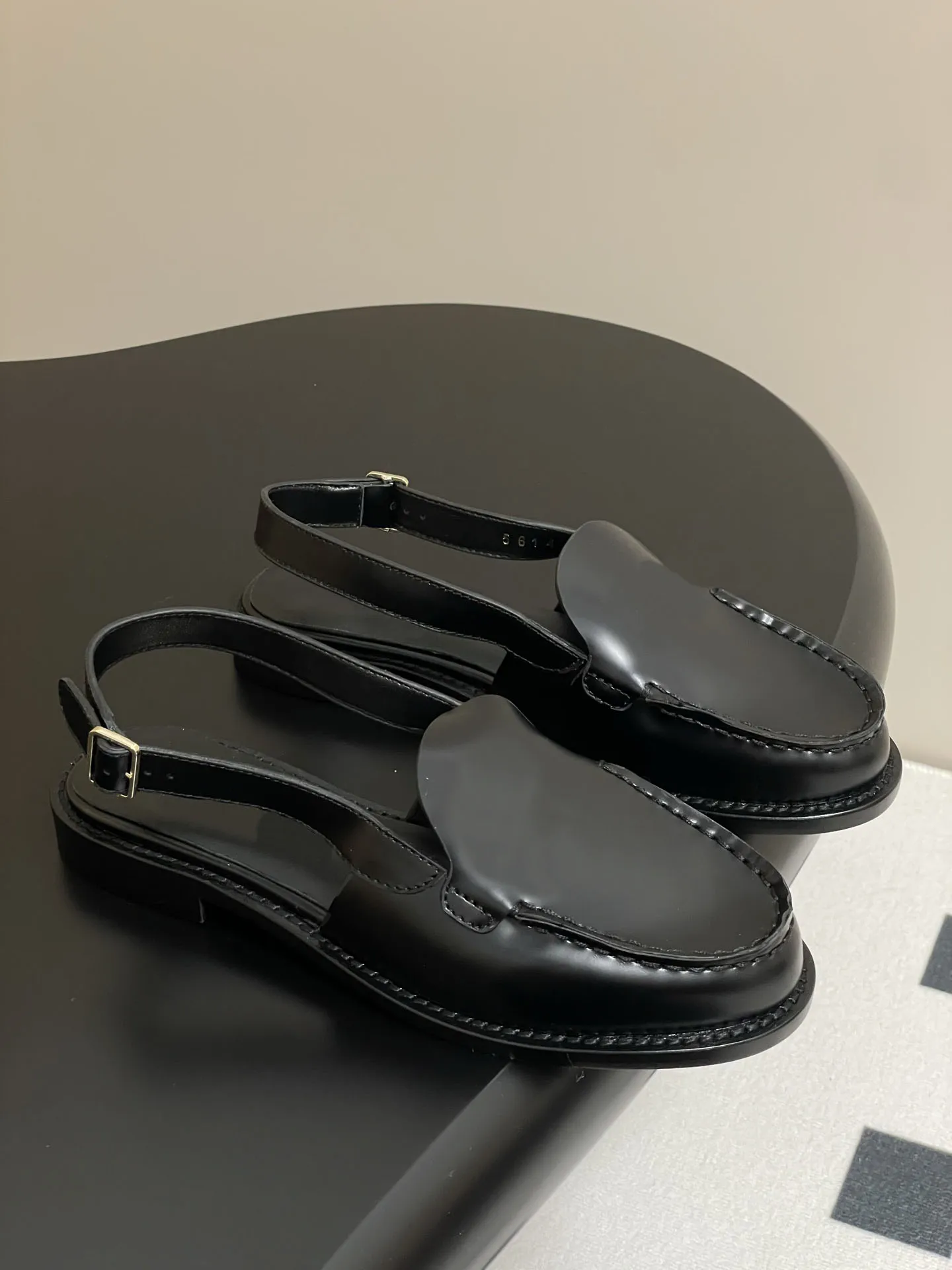
Addressing Specific Foot Conditions with Specialized Features
Different foot conditions require specific features in wedge loafers to ensure all-day comfort. Understanding your unique foot needs helps you select footwear that provides targeted support.
Flat Feet
People with flat feet (fallen arches) need wedge loafers with robust arch support to prevent overpronation. Look for designs with firm, contoured arch structures and deep heel cups that help maintain proper alignment. Motion control features along the midfoot provide the stability that flat feet typically lack, reducing fatigue during long standing periods.
High Arches
High-arched feet often lack natural shock absorption. For this condition, prioritize wedge loafers with enhanced cushioning throughout, particularly in the heel and forefoot. Flexible uppers accommodate the higher foot profile, while cushioned insoles help distribute pressure more evenly across the reduced contact surface of high-arched feet.
Plantar Fasciitis
This painful heel condition requires wedge loafers with excellent heel stabilization and arch support. Deep heel cups that cradle and cushion the painful area provide immediate relief. Models with slightly rockered (curved) soles reduce tension on the plantar fascia by easing foot motion through each step. Removable insoles allow for custom orthotic insertion if needed.
Bunions
Bunions demand wider toe boxes to prevent painful pressure on the affected joint. Look for wedge loafers with rounded or squared toe shapes rather than pointed designs. Soft, flexible upper materials (particularly stretchable leather) accommodate the bunion without creating friction. Some specialized designs include strategic stretch panels positioned exactly where bunions typically occur.
Heel Spurs
Wedge loafers with targeted heel cushioning help relieve pressure on painful heel spurs. Models featuring gel or air cushioning in the heel specifically address this condition. The graduated incline of wedge designs can also shift weight distribution forward, reducing direct pressure on the affected heel area.
For those with significant foot conditions requiring minimal heel height, our selection of comfortable low heel loafers offers supportive alternatives with many of these specialized comfort features.
Top-Rated Wedge Heel Loafers for Healthcare Professionals
Healthcare workers face unique challenges requiring specialized footwear features beyond those needed in typical office settings. The ideal wedge loafers for healthcare environments combine exceptional support with practical elements suited to medical settings.
Healthcare-appropriate wedge loafers must prioritize slip resistance for safety on potentially wet floors. Look for rubber outsoles with specialized tread patterns tested for healthcare environments. These patterns provide confident traction without deep grooves that might collect contaminants.
Infection control concerns make easy-to-clean materials essential. Smooth leather and certain treated synthetic materials can be quickly wiped down with appropriate disinfectants. Minimal seams and overlay designs reduce areas where contaminants might collect, making regular cleaning more effective.
The unpredictable nature of healthcare work requires footwear that balances security with quick adjustability. Styles with elastic goring or simple strap closures allow minor adjustments throughout shifts while maintaining a secure fit during unexpected movements.
Healthcare professionals often transition between standing and walking more frequently than other occupations. Lightweight designs with flexible forefoot construction reduce fatigue during these transitions, while maintaining the support needed for stationary periods.
Noise considerations are paramount in healthcare settings. Look for outsoles specifically designed to minimize squeaking on hard hospital floors. The composition of the sole material and tread pattern both contribute to noise reduction—a small detail that becomes significant during night shifts.
Women's Comfortable Flat Loafers, Women's Leopard Print Loafers, Women's Low Heel Loafers
$82.50 Select options This product has multiple variants. The options may be chosen on the product pageWomen's Block Heel Loafers, Women's Heeled Penny Loafers, Women's Monk Strap Loafers
$194.04 Select options This product has multiple variants. The options may be chosen on the product pageWomen's Block Heel Loafers, Women's Square Heel Loafers, Women's Square Toe Flat Loafers
Price range: $73.61 through $86.41 Select options This product has multiple variants. The options may be chosen on the product pageWomen's Comfortable Flat Loafers, Women's Leather Flat Loafers, Women's Round Toe Flat Loafers
$124.88 Select options This product has multiple variants. The options may be chosen on the product pageWomen's Black Heeled Loafers, Women's Black Platform Loafers, Women's Block Heel Loafers, Women's Chunky Heel Loafers
$72.58 Select options This product has multiple variants. The options may be chosen on the product pageWomen's High Platform Loafers, Women's Wedge Heel Loafers
$171.07 Select options This product has multiple variants. The options may be chosen on the product page
Best Wedge Loafers for Retail and Hospitality Workers
Retail and hospitality professionals face distinctive challenges that require specific features in their standing footwear. The ideal wedge loafers for these industries balance presentability with practical elements suited to customer-facing roles.
In retail and hospitality environments, floor surfaces vary dramatically—from polished marble to carpet to commercial tile. Wedge loafers with versatile outsoles featuring multidirectional tread patterns provide reliable traction across these varying surfaces. Look for designs tested for slip resistance on both dry and occasionally damp surfaces.
These customer-facing roles demand footwear that remains presentable throughout busy shifts. Stain-resistant leather finishes and darker colors hide minor scuffs and stains that inevitably occur in active environments. Some specialized designs incorporate protective coatings that repel liquid spills common in hospitality settings.
Retail and hospitality workers rarely have scheduled sitting breaks, making lightweight construction essential for reducing cumulative fatigue. Every ounce matters when you’re on your feet continuously—look for designs using lightweight sole compounds and streamlined construction methods without sacrificing support.
For those needing alternatives with similar professional appearance but different construction, our women’s comfortable flat loafers offer excellent options for retail and hospitality professionals prioritizing all-day comfort.
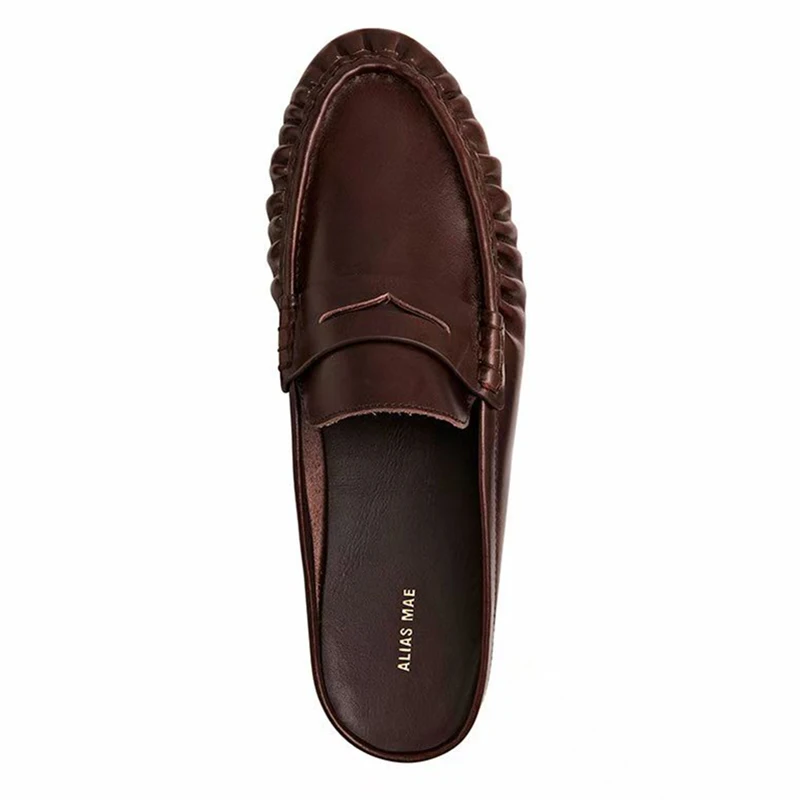
Are Wedge Heel Loafers Right for Teaching and Educational Settings?
Teaching presents unique standing challenges that differ from retail or healthcare environments. Wedge loafers can be excellent options for educators when selected with classroom-specific considerations in mind.
Are wedge loafers appropriate for educational professional standards?
Absolutely. Wedge loafers strike an ideal balance between authority and approachability—important qualities in educational settings. Their professional appearance satisfies faculty dress codes while providing the comfort needed for active teaching. The modest elevation of wedge designs conveys professionalism without creating an overly formal barrier between teacher and students.
How do wedge loafers accommodate the movement patterns of teaching?
Teaching rarely involves stationary standing. Instead, educators move between standing at boards, circulating among students, and occasional sitting. Wedge loafers with flexible forefoot construction support this movement variety better than rigid designs. Look for styles with secure fitting that won’t slip during these transitions between postures.
What surface considerations matter in classroom environments?
Educational settings typically feature durable, low-maintenance flooring like polished vinyl or industrial carpet. Wedge loafers with moderate traction patterns provide stability without creating catching or dragging on these surfaces. For science labs or art rooms where spills might occur, water-resistant materials offer practical protection.
Is noise a significant factor in choosing wedge loafers for teaching?
Yes, especially for elementary education. Quiet outsoles prevent distracting sounds during lessons or testing periods. Many quality wedge loafers feature sound-dampening sole materials specifically designed to minimize noise—a feature particularly appreciated during quieter classroom activities.
The ultimate guide to women’s loafers for the office offers additional insights applicable to educational professional settings, with many principles crossing over between these professional environments.
How to Extend the Life of Your Comfort-Focused Wedge Loafers
Quality wedge loafers represent a significant investment in your foot health and professional appearance. Proper care substantially extends their lifespan while maintaining their supportive properties.
Daily Maintenance Routine
Wipe down your wedge loafers with a soft cloth after each wearing to remove surface dust and prevent buildup. Allow at least 24 hours between wearings, using shoe trees to maintain shape and absorb moisture. This drying period is crucial for preserving both materials and cushioning elements.
Material-Specific Care
Leather wedges benefit from regular conditioning with appropriate leather products to prevent drying and cracking. Apply waterproofing treatments seasonally to protect against unexpected moisture. For suede styles, use a specialized brush to maintain the nap and remove surface soil before it becomes embedded.
Rotation Strategy
Implement a minimum two-pair rotation system for wedge loafers worn during long standing periods. This rotation allows complete recovery of cushioning materials and extends the effective life of each pair by up to 50%. Different styles can be selected for rotation to accommodate varying outfits while maintaining consistent comfort.
Preventive Protection
Apply protective sole covers to high-wear areas before damage occurs. These thin, transparent guards preserve the outsole integrity without altering the shoe’s appearance. Consider heel tip replacement at the first sign of wear rather than waiting for significant erosion that might affect your gait.
Insole Refreshment
Replace removable insoles when compression becomes evident, typically every 6-12 months with daily wear. This simple maintenance step restores cushioning properties even as the exterior remains in excellent condition. Many premium replacement insoles offer enhanced support compared to original components.
For those seeking alternatives to extend their footwear wardrobe, our collection of women’s low heel loafers offers additional options that benefit from these same care techniques.
Can Custom Orthotics Be Used with Wedge Heel Loafers?
Yes, custom orthotics can often be successfully integrated with wedge loafers, but compatibility depends on specific design features and considerations.
What makes a wedge loafer compatible with custom orthotics?
The most critical factor is removable insoles. Wedge loafers with factory insoles that lift out completely provide space for custom orthotics without raising your foot too high within the shoe. Adequate depth is equally important—look for styles with deeper heel cups and overall volume to accommodate the additional thickness of custom devices without causing heel slippage or crowding toes.
How can you assess if your orthotics will fit before purchasing?
If shopping in person, bring your orthotics with you and remove the existing insole to test the fit. When shopping online from trusted retailers like Artisan Haul, check depth measurements or specific mentions of “orthotic-friendly” designs. Some manufacturers explicitly state compatibility with custom inserts as a feature.
Will adding orthotics to wedge loafers affect stability?
Potentially, but often positively. Custom orthotics may actually enhance the stability of wedge designs by improving your foot’s alignment and support. However, particularly rigid orthotics might initially feel strange in combination with the wedge incline. Most podiatrists recommend a gradual wearing period to allow adaptation when first combining orthotics with wedge heels.
Do certain wedge heights work better with orthotics?
Lower to mid-height wedges (1-2 inches) typically accommodate orthotics most successfully. This moderate height provides enough space for insertion while maintaining the proper foot position within the shoe. Very high wedges may create too steep an angle when combined with the additional lift of an orthotic device.
Can partial orthotics be used if full devices don’t fit?
Yes, three-quarter length orthotics (ending just behind the ball of the foot) often integrate more successfully with wedge designs. These shorter devices provide key arch and heel support while allowing the forefoot to maintain normal flexibility and positioning in the shoe’s toe box.
What’s the Difference Between Wedge Loafers and Wedge Oxfords for Standing?
While wedge loafers and wedge oxfords both offer excellent stability for extended standing, their structural differences impact comfort and functionality in important ways.
The fundamental distinction lies in their entry design. Loafers feature slip-on construction with no lacing system, creating an open topline that allows easy on-off transitions. Oxfords, conversely, utilize laced closures that secure the foot with adjustable tension. This structural difference directly affects stability during movement—oxfords provide more customizable security, while loafers offer convenience and often greater comfort across the instep.
For pure stationary standing, many find wedge loafers superior due to their typically more flexible construction and absence of pressure points created by lacing systems. The uninterrupted upper of loafers distributes pressure more evenly across the midfoot, reducing discomfort during long stationary periods.
During active movement between standing positions, wedge oxfords may provide advantages for certain foot types. The adjustable lacing allows customization of fit that accommodates foot swelling throughout the day. This adaptability makes oxfords potentially better for roles requiring frequent transitions between sitting and standing or significant walking between standing periods.
From a style perspective, wedge loafers typically present a more versatile professional appearance that transitions easily between different levels of formality. Their clean lines and minimal visual interruption create a streamlined look that complements various professional wardrobes. Wedge oxfords generally convey a more structured, traditional aesthetic that works especially well in highly formal professional environments.
How to Transition from Flat Shoes to Wedge Heel Loafers
Moving from exclusively flat footwear to wedge heels requires a thoughtful transition process to allow your muscles, tendons, and gait to adapt comfortably.
Start with a conservative height
Begin with wedges in the 1-1.5 inch range rather than immediately jumping to taller options. This modest elevation allows your calf muscles and Achilles tendon to adjust gradually without excessive strain. Even this small height change activates different muscle patterns that need time to strengthen.
Implement a progressive wearing schedule
Day 1-2: Wear your new wedge loafers for 2-3 hours maximum
Week 1: Gradually increase to half-day wearing
Week 2-3: Alternate between wedge loafers and flats daily
Week 4+: Build to full-day wear as comfort allows
Support your transition with simple exercises
Calf stretches: Hold for 30 seconds, repeat 3 times daily
Ankle circles: 10 rotations in each direction, several times daily
Toe raises: 3 sets of 10 repetitions to strengthen supporting muscles
Listen to your body’s feedback
Normal adaptation signs include mild muscle fatigue and slight adjustment discomfort. However, sharp pain, persistent discomfort after removing shoes, or unusual wear patterns on your new wedges indicate potential problems with fit or transition speed. Address these signals by adjusting your timeline or reassessing your shoe selection.
Use supportive accessories during transition
Consider using silicone heel grips to prevent slippage during the breaking-in period. Ball-of-foot cushions can ease forefoot pressure as you adjust to the new weight distribution. These temporary aids can make the transition more comfortable without requiring long-term use.
Making an Informed Purchase: Evaluating Quality vs. Price
Investing in quality wedge loafers requires balancing immediate cost considerations with long-term value and foot health benefits.
When evaluating wedge loafers across different price points, assess the cost-per-wear value rather than just the purchase price. A $150 pair worn 3 times weekly for two years costs approximately $0.50 per wearing—often less than lower-quality options requiring frequent replacement. This calculation helps justify investing in higher-quality footwear that provides consistent comfort and support.
Quality indicators exist independent of brand names or price tags. Examine construction details like:
– Smooth, consistent stitching with no loose threads
– Secure attachment between upper and sole with no visible gaps
– Flexibility in appropriate areas without excessive bending
– Balanced weight that feels neither too heavy nor suspiciously light
– Interior finishing without rough edges or exposed components
The relationship between price and quality isn’t always linear, but certain price thresholds typically reflect construction differences:
– Entry-level ($50-100): Typically feature synthetic materials with basic comfort features
– Mid-range ($100-175): Often incorporate better materials and more sophisticated support systems
– Premium ($175+): Generally offer exceptional materials, advanced comfort technologies, and construction methods designed for longevity
Consider the hidden costs of choosing solely based on low price. Inadequate support leads to potential podiatry visits, while poor durability necessitates frequent replacements. Discomfort can reduce productivity and enjoyment, creating costs difficult to quantify but significantly impacting your daily experience.
Stepping into Comfort: Final Thoughts on Prioritizing Foot Health
The journey to finding the perfect wedge loafers for all-day standing represents more than a quest for comfortable shoes—it’s an investment in your overall wellbeing and professional effectiveness.
When standing comprises a significant portion of your workday, your footwear choice directly impacts everything from energy levels to concentration ability. Quality wedge loafers that distribute weight properly while providing adequate support allow you to focus on your work rather than foot discomfort. This improved focus translates directly to better performance and career satisfaction.
The ideal balance between comfort and style isn’t merely possible—it’s essential. Today’s innovative designs prove that professional appearance need not come at the expense of physical comfort. By prioritizing the features outlined throughout this guide, you can select wedge loafers that complement your professional wardrobe while supporting your body’s needs.
Take a moment to assess your current footwear critically. Are your shoes truly serving your needs, or are you adapting to their limitations? Notice how your feet feel at day’s end, and consider how improved footwear might change that experience. Small discomforts that seem manageable in the moment often compound over time, making proactive footwear selection an act of self-care.
Remember that your specific foot structure, typical standing duration, and workplace environment create unique needs. The perfect wedge loafer for a retail associate may differ from the ideal choice for a healthcare professional or educator. Honor these individual requirements when making your selection, focusing on the specific features that address your particular challenges.
Your feet carry you through every workday—they deserve footwear that supports them properly while elevating your professional presence. With the right wedge loafers, each step becomes a confident one.

